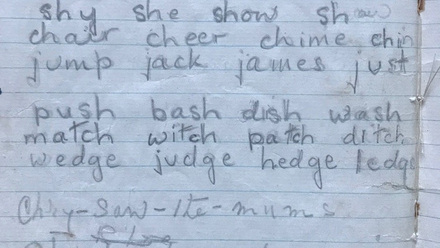
The knight in a royal dress
Hidden away in a cabinet at the Royal Armouries is a sword gifted by the Chevalière D’Éon, a French soldier who, although assigned male at birth, spent decades living openly as a woman. The panels alongside the sword give little information about her life, misgendering her with the masculine ‘Chevalier’ despite her inscription on the blade using the feminine form. The hidden story of her life and identity – both as a trans woman and as a woman who challenged social expectations - was a favourite of many of the Forgotten Battles volunteers.

Chevalière d'Eon's sword - inscribed 'Donne par la Chevalïere d’Eon à son ancïen Ami Geo: Keate Esquïre. 1777'. translated as 'Given by the knightess of Eon to her old friend George Keate Esquire 1777' (© Royal Armouries).
She died in London in May 1810, when, sadly, her body was subjected to an investigation to ascertain her genital presentation. Crowds of people pressed into her apartments to view her corpse, and a drawing was produced as proof of her ‘real sex’.
The Chevalière’s story is remarkable, but it is one of many throughout history that have often been overlooked, especially those that do not fit into a binary understanding of what constitues trans history. In telling her story, we hope to encourage greater exploration of trans stories hidden in museum collections.
The macho king
The armoured queen
Elizabeth’s relationship with her gender was complicated. She certainly presented herself as a woman, but also upheld patriarchal ideas that women were inferior to men, distancing herself from her womanhood when politically advantageous. In the film, I have used this line to accompany footage of Elizabeth binding her chest and putting on armour, not to imply that she was necessarily trans or non-binary, but to explore this rejection of her female body in favour of an interiority which feels male.
Find out more
- Forgotten Battles: Gender in the Armouries features an object trail exploring hidden stories of gender through 10 objects in the collection, as well as an exhibition of creative responses. Both are free at the Royal Armouries in Leeds until November 2024.
- For more on trans histories, Cat recommends: Before We Were Trans: A New History of Gender by our Project Lead, Dr Kit Heyam!
- For more related to Henry’s masculine presentation, Cat recommends: Will Fisher, Materialising Gender in Early Modern English Literature and Culture and Eleanor Rycroft, Facial Hair and the Performance of Early Modern Masculinity.







